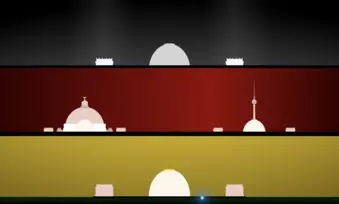For the Art.By the Art.With the Art
Copism
What is Copism?
First of all Copism means to copy. Founded in 2013 by Nico Franz, copyism is a new movement in modern art. Its followers call themselves copyists. The copyists see themselves as modernizers of art. They exclusively reinterpret already existing works by revealing their truths in the copist process.
Novus Ordo Copia
Das Kopistische Manifest
This manifesto is the basis of copist action.
The copyist process consists of emotion, analysis, imitation and duplication.
The work of a copyist may only be changed, but not copied.
Each copy is unique.
Copism is a global movement of art.
Copism is committed only to art.
The copyist says everything is copy:
Copist was, who copied.
Copist is, who copies.
Copist becomes, who copies.
Copyist catalog raisonné
Copism has produced four styles since its emergence. Common to all of them is the consistently pursued goal of dissolving the iconic rigidity of the referenced originals.
Chronological overview
Moving art, since 2014
The copyist moves art.
Pixelication, since 2014
In search of the smallest common element of painted art, the copyists have recognized the pixel as the basis of all works. Copied in this copyist play is the pixel itself, admittedly not without being parametrized in the process.
New Realism, since 2018
New Realism seeks to build a significant bridge between the worlds of classical painting, the natural original, and this is new, the medium of its representation. New Realism questions existing and learned levels of interpretation and then returns them to their depicting object. This is to create islands of meaning from which the viewer can escape in the moment of realization of its reality.
Art of Chance, since 2019
Works, rigid in their impression, arbitrary in their essence, the copyist uses as a starting point for a creative process. He cancels this rigidity and makes the arbitrariness apparent by breaking down the whole into its elements and then reassembling it anew. The copyist uses randomly parameterized proportions, shapes and colors of the original. This creates a new work that multiplies the original levels of meaning through its diversity.
If the art is free of every subjective selection and only due to the coincidence itself, only then is this my work truly perfect.










![[Translate to english:] [Translate to english:]](/fileadmin/_processed_/b/b/csm_selbstportaet-mit-canvas_a2c390c76a.webp.pagespeed.ce.Rjo82ChF0t.webp)
![[Translate to English:] [Translate to English:]](/fileadmin/_processed_/9/3/csm_dualitaet-der-kunst_a4184b257e.webp.pagespeed.ce.d6EBvP_QBk.webp)
![[Translate to english:] [Translate to english:]](/fileadmin/_processed_/b/0/csm_money-never-sleeps-pal_70f9477ced.webp.pagespeed.ce.iAAaRfA-gR.webp)
![[Translate to English:] [Translate to English:]](/fileadmin/_processed_/c/a/csm_moving-oiet_520e18c37c.webp.pagespeed.ce.4lqNn5LHbd.webp)